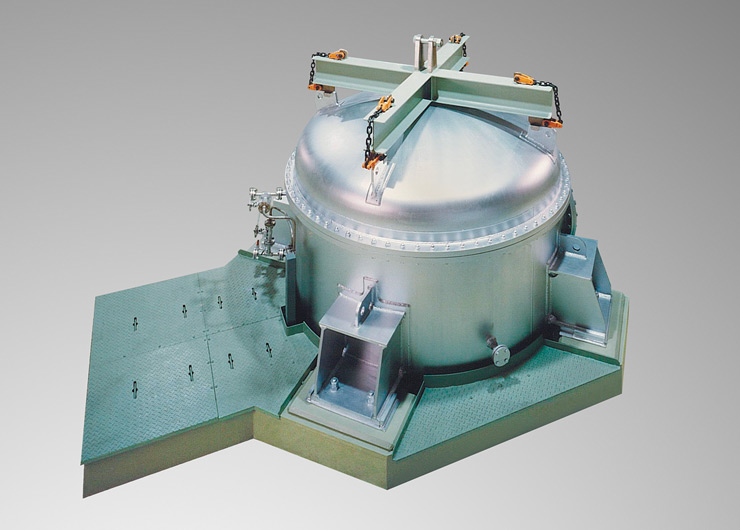Waste disposal process containing low-level radioactive materials
Human activities are always accompanied by waste, and nuclear power plants are no exception. In addition to consumables such as work clothes and protective sheets, these facilities generate waste such as parts and filters replaced during periodic inspections. Hospitals and research institutes generate an increasing amount of waste from radiation-controlled areas.
All of them contain radioactive materials, albeit at low levels, so proper disposal in accordance with the rules is required. First, it is essential to incinerate, melt and compress the waste in a treatment facility that does not leak radioactive materials to the outside, and to make the waste as compact as possible.
NGK has designed and delivered low-level radioactive waste treatment systems to nuclear power plants throughout Japan and oversees their maintenance and inspection. Our process engineering uses heating and filtering technologies that we have cultivated over the years.
Appropriate disposal of waste essential for nuclear power plants
Nuclear power plants generate a variety of low-level radioactive wastes. These include combustible materials such as work clothes and protective sheets; non-combustible materials such as pipes, insulation materials, ventilation filters and glass that are replaced during periodic inspections; and liquid waste such as laundry wastewater and oil.
These low-level radioactive wastes are treated to reduce their capacity as much as possible in the power plant to facilitate storage and management. Properly reducing the volume of waste is essential for the smooth operation of nuclear power plants.
Combustible materials, which make up 70-80% of the waste, are burned in incinerators, as is oil. Noncombustibles are melted in high-frequency melting furnaces or compressed under high pressure to reduce their volume. Off-gases generated from the incinerator and melting furnace are thoroughly filtered through a built-in ceramic filter to remove dust, which is then treated. Washing wastewater, which is liquid waste, is also filtered through a ceramic filter to remove radioactive materials.
NGK designs and operates systems with a consistent safety philosophy
The entire system has been carefully designed to ensure that no radioactive materials escape to the outside.
Low-level Radioactive Waste

Writer
Furukori Etsuko
Science and Technology Journalist
Furukori Etsuko graduated from the University of Tokyo with a bachelor's degree in chemistry and liberal arts. While working for a pharmaceutical company, she began writing articles for science magazines and discovered the joy of interviewing researchers and engineers. Since then, she has been writing, researching, planning and editing articles on science, technology and related topics. She is an MIT Science Journalism Fellow and a founding member of Sci-Tech Communications.


